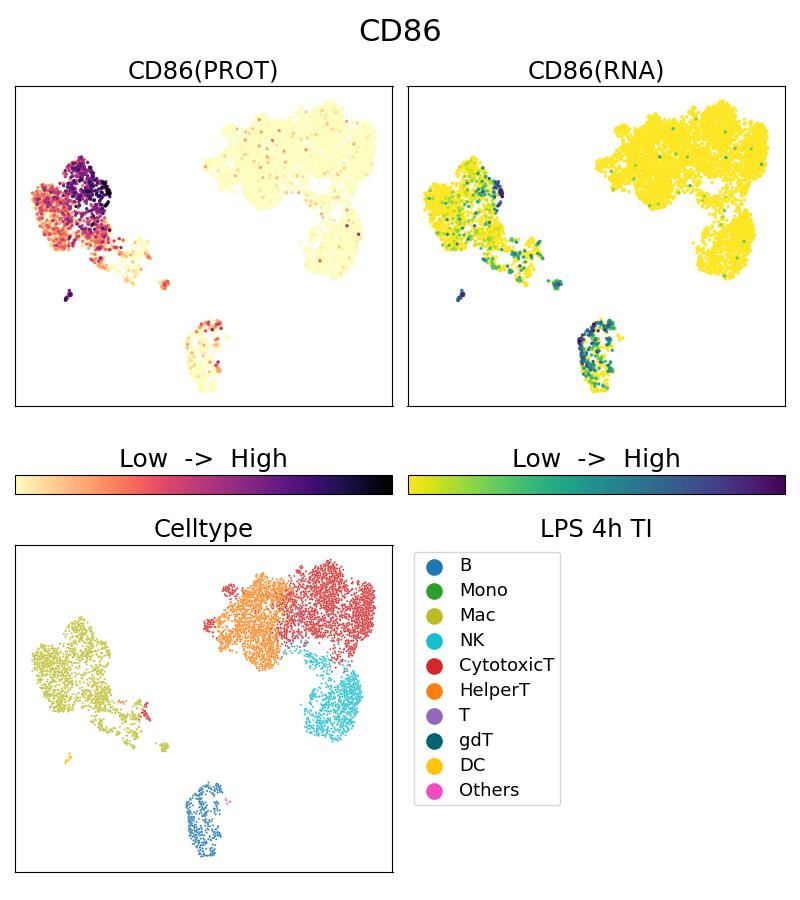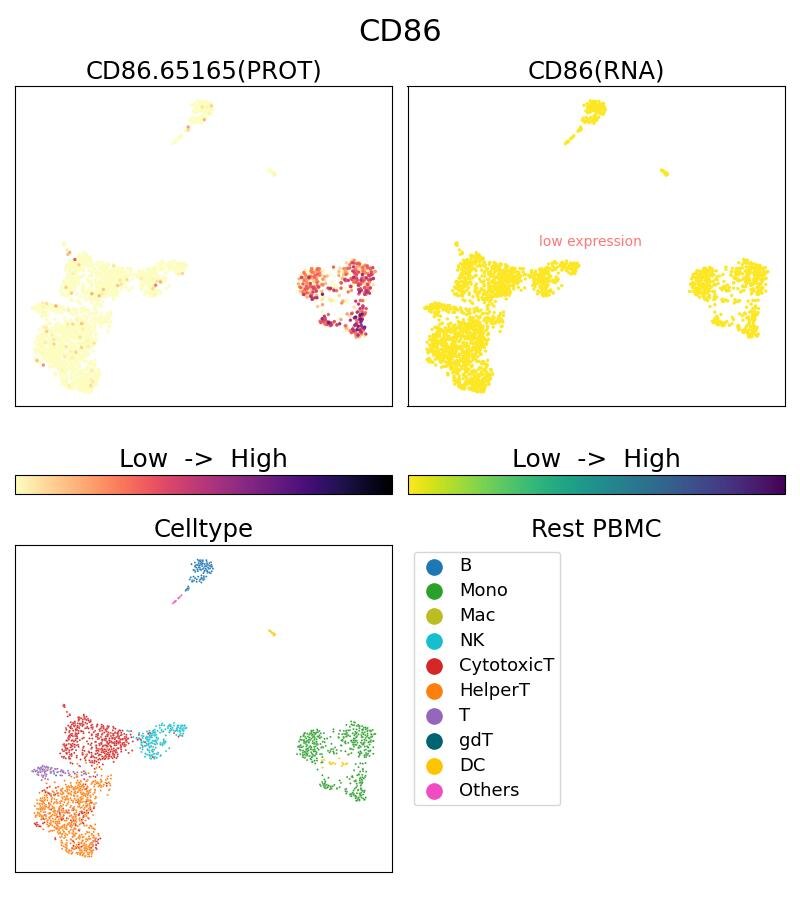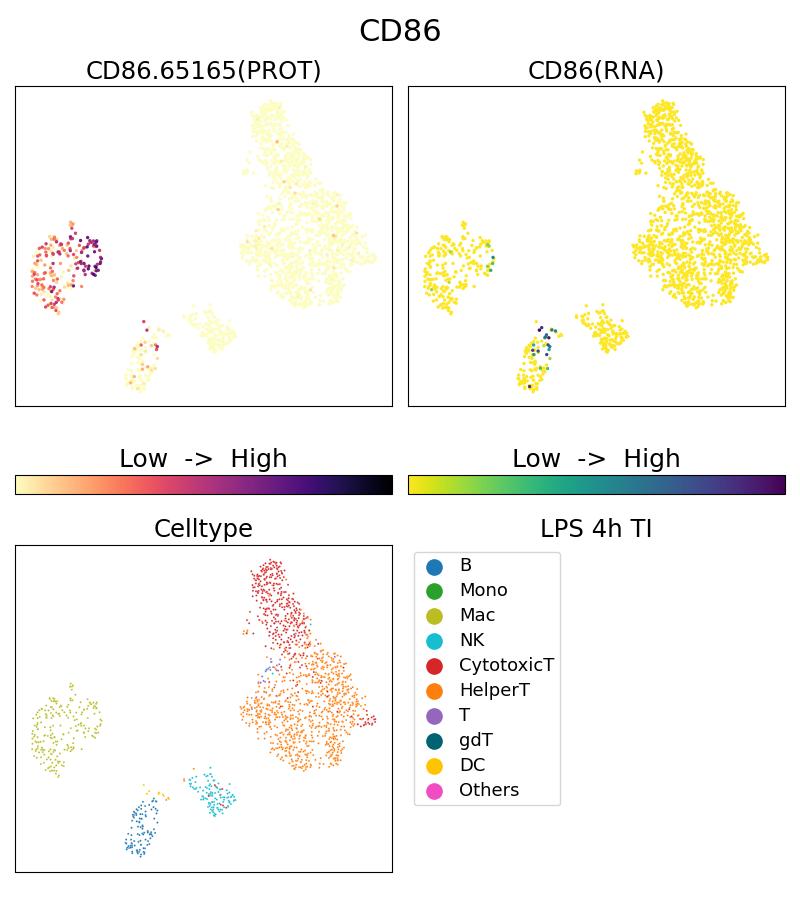Tested Applications
| Positive Single Cell (Intra) detected in | 10x Genomics Gene Expression Flex with Feature Barcodes and Multiplexing product. |
| Positive Single Cell detected in | 10x Genomics Gene Expression Flex with Feature Barcodes and Multiplexing product. |
Recommended dilution
| Application | Dilution |
|---|---|
| SINGLE CELL (INTRA) | <0.5ug/test |
| SINGLE CELL | <0.5ug/test |
| It is recommended that this reagent should be titrated in each testing system to obtain optimal results. | |
Product Information
G65165-1-5C targets CD86 in Single Cell (Intra), Single Cell applications and shows reactivity with Human samples.
| Tested Reactivity | Human |
| Host / Isotype | Mouse / IgG1, kappa |
| Class | Oligo Conjugate |
| Type | Monoclonal |
| Immunogen | B-lymphoblastoid cell line ARH 77 Predict reactive species |
| Full Name | MultiPro® 5CFLX Anti-Human CD86 (BU63) |
| Calculated Molecular Weight | 329 aa, 38 kDa |
| GenBank Accession Number | BC040261 |
| Gene Symbol | CD86 |
| Gene ID (NCBI) | 942 |
| ENSEMBL Gene ID | ENSG00000114013 |
| RRID | AB_3673923 |
| Conjugate | 5CFLX |
| Full Oligo Sequence | CGGAGATGTGTATAAGAGACAGCCGAGTTGCGAAGTTCCCATATAAGAAA |
| Barcode Sequence | CCGAGTTGCGAAGTT |
| Form | Liquid |
| UNIPROT ID | P42081 |
| Storage Buffer | PBS with 1mM EDTA and 0.09% sodium azide , pH 7.3. |
| Storage Conditions | 2-8°C Stable for one year after shipment. |
Background Information
CD86 (also known as B7.2) is a costimulatory molecule belonging to the immunoglobulin superfamily. Primarily expressed on antigen-presenting cells (APCs), including B cells, dendritic cells, and macrophages, CD86 is the ligand for two proteins at the cell surface of T cells, CD28 antigen and cytotoxic T-lymphocyte-associated protein 4. Binding of CD86 with CD28 antigen is a costimulatory signal for activation of the T-cell. Binding of CD86 with cytotoxic T-lymphocyte-associated protein 4 negatively regulates T-cell activation and diminishes the immune response.
Protocols
| MultiPro™ Cell Surface and Intracellular Staining Protocol | Download protocol |
| 10x Genomics Cell Surface Protein Only Staining Protocol | Download protocol |







